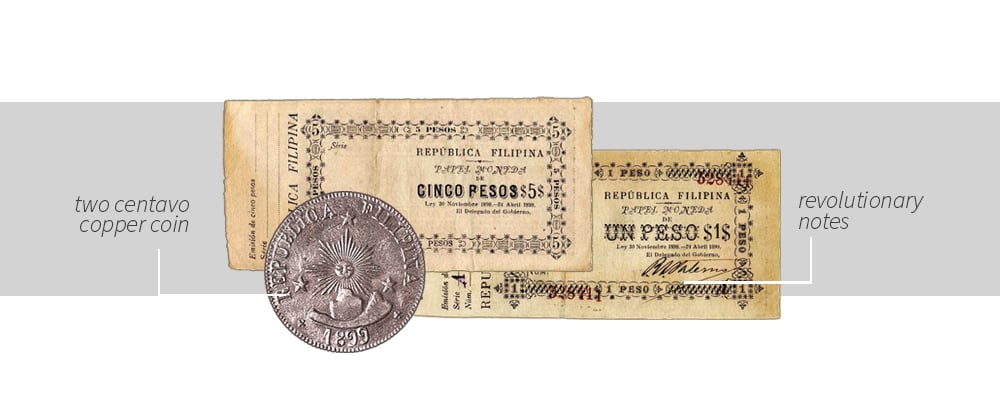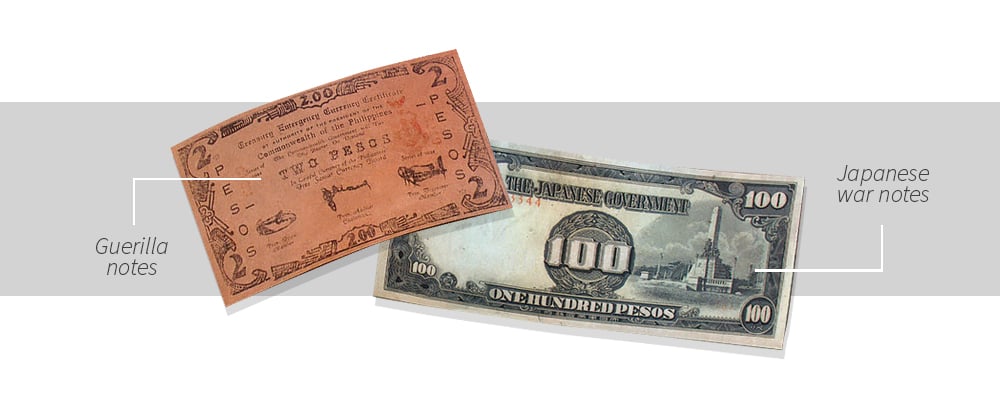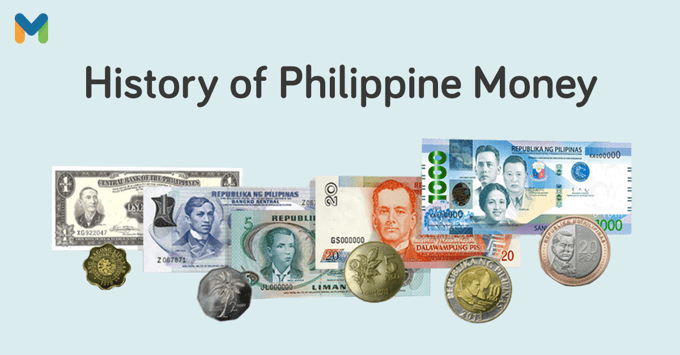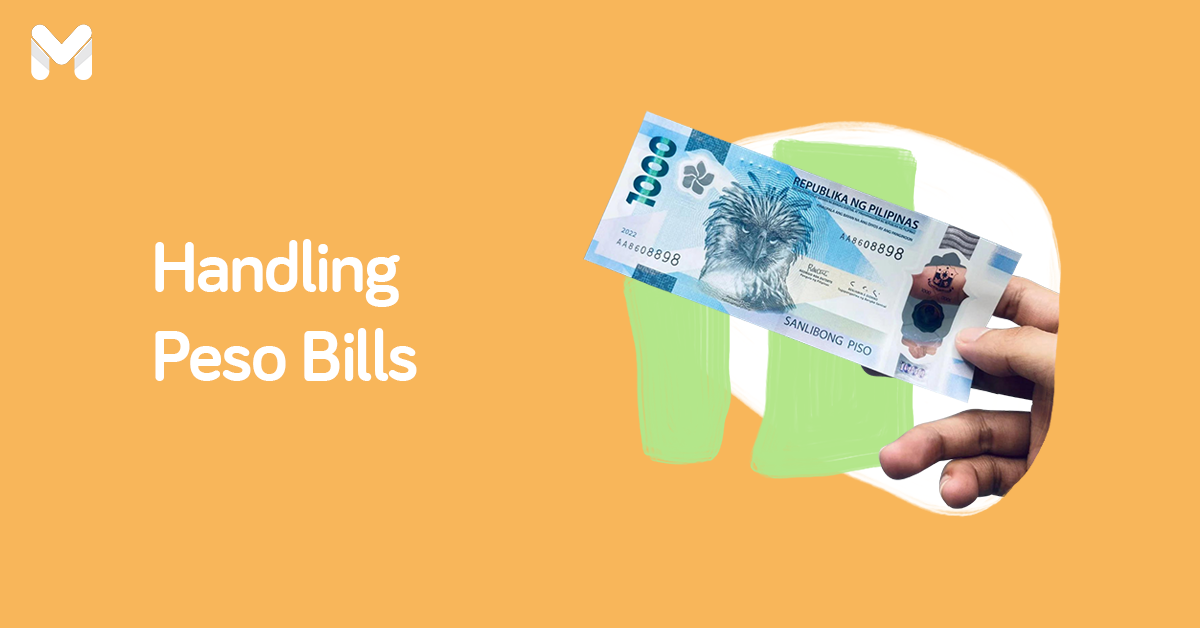It’s easy to overlook the history of money since it has always been part of your life. But has it ever crossed your mind how the Philippine peso came to be?
The Philippines has a long and rich history. Alongside the political changes witnessed by our islands is the evolution of Philippine money. If you look back, you’ll find a lot of interesting things that will make you appreciate the country’s heritage even more.
Take a look at the storied history of money in the Philippines.
History of Money in the Philippines: Overview of the Philippine Peso
-1.png?width=600&height=400&name=Pics%20for%20blog%20-%20600x400%20(38)-1.png)
With PHP as its abbreviation and ₱ as its symbol, the Philippine peso is the country’s national currency. It’s also locally known as piso.
The Philippine peso is divided into 100 cents or sentimo. It has two forms: coins and banknotes.
The Bangko Sentral ng Pilipinas or BSP is the national agency responsible for the printing and minting of the Philippine peso. Both bills and coins of the Philippines are mostly minted and printed at the BSP Security Plant Complex.
Other than standard coins and banknotes, the BSP also produces commemorative currencies. These are made to recognize and honor certain individuals, events, and places in the Philippines. Eventually, commemorative coins and banknotes become collector’s items.
Speaking of commemorative money, the BSP has released a new set of coins that celebrates some of the country’s significant events. This collection features three denominations—100, 20, and five pesos.
The 100-peso coin monumentalizes the declaration of our country’s independence from Spain in 1898. The 20-peso coin honors the birth of the first Philippine republic at the Barasoain Church. Meanwhile, the five-peso coin commemorates the sacrifice of the Filipinos who fought during the Philippine-American War.
According to the BSP, these three coins are the first colored commemorative coins produced using digital printing technology. These are up for sale at the official BSP online shop.[1]
Learn more about the timeline of Philippine money below.
Related reading: What Can You Buy with ₱10?
💸 Before the Conquerors Came: The Pre-Hispanic Period

Photo: Bangko Sentral ng Pilipinas
The means of purchase and trade before the Spanish era mainly involved exchanging of goods, a system known as barter. However, barter trade in the Philippines’ history proved to be inconvenient, hence the development and use of cowry shells as a medium of exchange. Cowries are made of jade, wood, quartz, and even gold.
The ancient history of money in the Philippines also saw the use of barter rings. Usually bigger than a doughnut, these rings are made of nearly pure gold.
Piloncitos marked the first form of local coins. These old coins in the Philippines are small beads of pure gold that were used until the earliest years of the Spanish era.
💸 The Era of Galleons and Friars: The Spanish Period
The history of Philippine money also saw the use of macuquinas or cobs, which were coins made of silver. These were brought to the Philippines by galleons coming from Mexico and other Spanish colonies.
In 1726, Philippine money (coins and bills) underwent another change with the production of Columnarios or Dos Mundos (Two Worlds). These silver coins were minted by machines.
The Dos Mundos was famed for its beauty and practicality. Its symbolism, which features twin crowned globes, is the representation of the Spanish Empire’s rule over the Old World and the New World.[2]
Do you know where the term barya originated? It’s actually from barilla, a crude bronze or copper coin released by the Spanish Empire to counter the shortage of small denomination coins otherwise known as fractional coins.
Meanwhile, the first paper money in the Philippines was printed by the country’s first bank—El Banco Español Filipino de Isabel II. The banknote is known as pesos fuertes.
💸 Freedom from the Spanish Empire: The Revolutionary Period

Photo: Bangko Sentral ng Pilipinas
The Revolutionary Period refers to the time Filipino revolutionaries fought the Spanish Empire for the country’s freedom. Once independent from the empire, the country released its own Philippine coins and bills under General Emilio Aguinaldo’s leadership in 1898.
The notes during this period bore the signatures of the following revolutionaries: Pedro Paterno, the prime minister of the First Philippine Republic; Mariano Limjap, a businessman and philanthropist; and Telesforo Chuidian, a wealthy businessman who served as a major contributor to the Katipunan.
💸 The American Colonial Era
The history of money in the Philippines took a progressive direction when the country was under American rule. One of the milestones in this era was the passing of the Philippine Coinage Act of 1903. This established a monetary system based on a theoretical gold peso at the ratio of ₱2 to $1.
In 1912, El Banco Español Filipino was renamed Bank of the Philippine Islands or BPI.
💸 The Japanese Invasion

Photo: Bangko Sentral ng Pilipinas
During the Second World War, Imperial Japan circulated fiat currency known as Japanese Invasion Money. This money was derogatorily nicknamed “Mickey Mouse money” because of its low monetary value. The name also implies that these banknotes were as good as play money.
The worthlessness of these Philippine coins and bills was caused by hyperinflation. There were even reports that people would go to the market and pay for menial purchases with bags of Japanese Invasion Money.
While in exile, the Philippine Commonwealth Government still printed and circulated notes known as guerilla pesos. This money was issued and used in various provinces.
However, possession of these Philippine coins and bills was outlawed. Those who owned them could be arrested or executed.
💸 The Contemporary Currency
The contemporary history of money in the Philippines has various phases. After the war, English Series banknotes were circulated until 1971. These Philippine bills were written in English.
Philippine money was “Filipinized” or printed in Filipino starting in 1969. Then, it was succeeded by the Ang Bagong Lipunan (ABL) series, in which the highest denomination was ₱2.
The ABL series was then succeeded by the New Design Series otherwise known as the BSP series. BSP Series five-peso and 10-peso notes were printed until 1995 and 2001 respectively. One thousand-peso notes were printed until 2012. Meanwhile, 50-, 100-, and 500-peso notes were printed until 2013.
The latest iteration of Philippine coins and bills is named the New Generation Currency Series. Coins and banknotes under this series have been issued since 2010.
One-peso coins are smaller compared to their predecessors. Twenty pesos, on the other hand, take on the appearance of a bimetallic coin (similar to the design of 10-peso coins).
One thousand-peso polymer banknotes were issued in 2022. As of this year, a total of 39 million pieces of the said banknote are already in circulation.[3]
Read more: Fake Money vs Real Money: How to Know if Your Cash is Legit
Final Thoughts
The banknotes and coins in your wallet are not only a medium of payment. They also reflect our country’s evolution, from Spanish colonization to Martial Law. And as you can see in Philippine money before and now—such as in the country’s leap from barter rings to polymer banknotes—the history of money in the Philippines is rich and interesting.
Sources:
- [1] The BSP Store Official Online Shop
- [2] The Old World and the New World (World Atlas)
- [3] ₱1K Polymer Banknotes Now in More ATMs (Philstar, 2023)
- Featured image from Bangko Sentral ng Pilipinas









